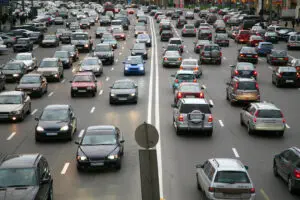 Elasticity of demand measures how sensitive we—as consumers—are to changes in price. How much more or less of something will we want if the price goes down or up?
Elasticity of demand measures how sensitive we—as consumers—are to changes in price. How much more or less of something will we want if the price goes down or up?
Economists think about this relationship using the shape of demand curves. As we know from the Economist’s Handbook of Proverbs, demand curves slope downward. This downward slope visually represents the fact that consumers demand more at lower prices and less at higher prices (to calculate how much more, there’s a formula).
Elasticity isn’t just a theoretical concept: we can estimate it for any good or service. In particular, we have plenty of data available showing how demand for energy—and in particular, specific fuels—might be sensitive to changes in price.
One way that we expect households and businesses to respond to a carbon price is by using less energy — and also by using different kinds of energy. We can heat our homes and offices with natural gas, diesel, or electricity. We can commute in a car, or with public transit, or on foot. We can prepare food on a gas stove, in an electric oven, or eat some foods raw.
Carbon pricing changes the prices of these various substitutes, but by different amounts. The price of carbon-intensive things will rise more than less carbon-intensive things. These price changes will lead households and businesses to change their behaviour—some by a little and others by a lot. Some will substitute or conserve (e.g. take the bus or buy a more fuel-efficient car) and some people won’t. Some will switch to an electric furnace, others will turn down the heat. Others may not respond at all. The overall response may not be huge at first, but there will be a response. The same logic holds for congestion pricing, water pricing, or waste pricing.
Leave a Reply